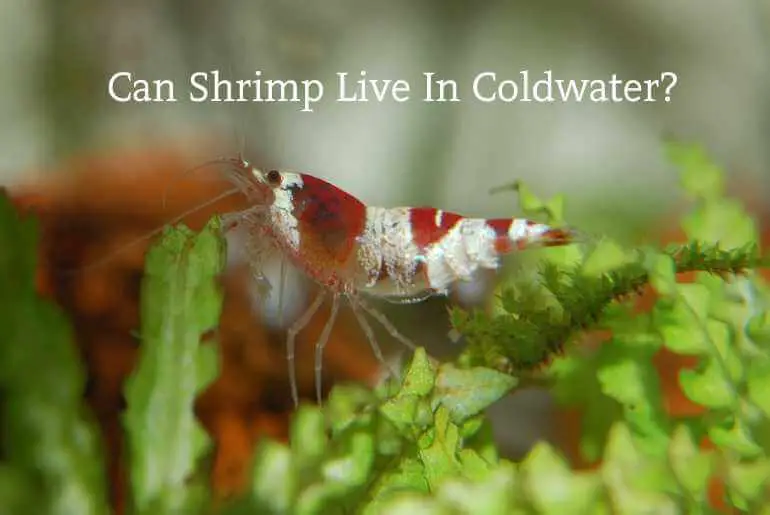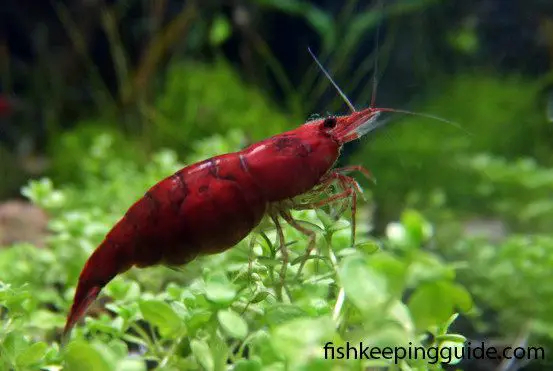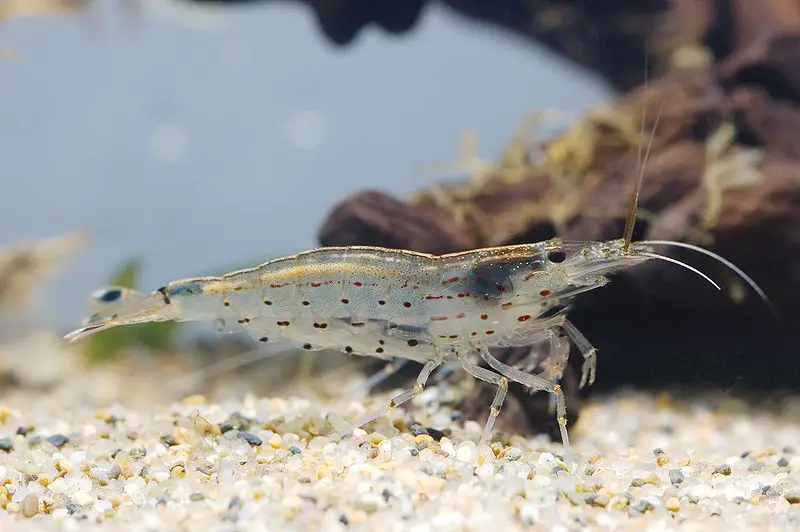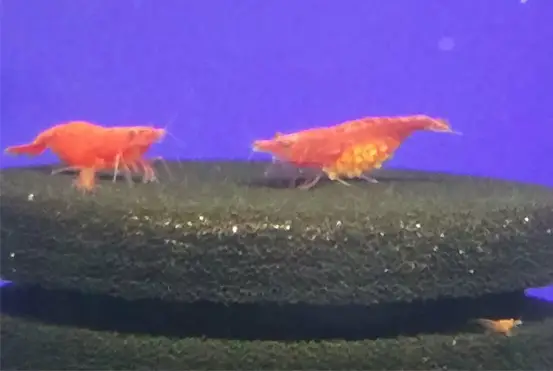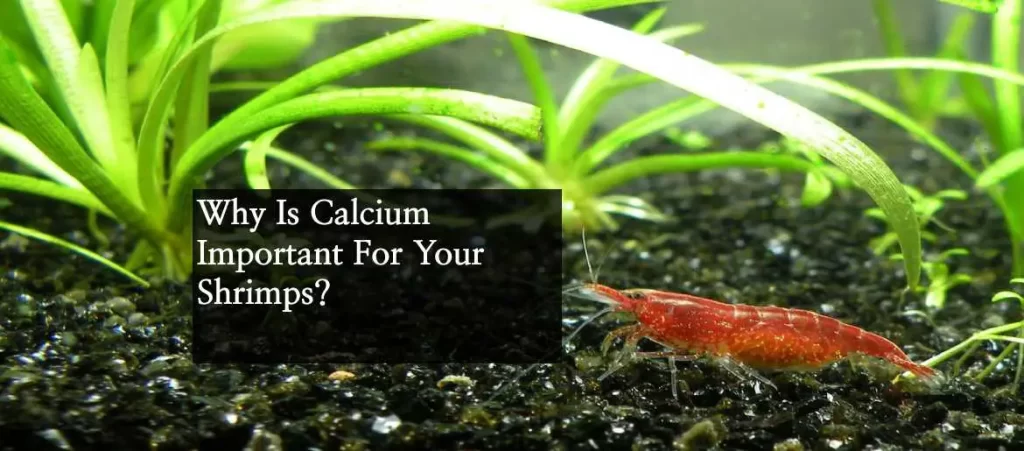Can shrimp live in cold water? This is a common question for aquarium hobbyists and shrimp enthusiasts. As we dive into the details around ideal water temperatures and conditions for different types of shrimp, you’ll get a clear answer.
I’ll start by giving an overview of shrimp and water temperature tolerance. Then we’ll look at the kinds of water various shrimp species live in, ranging from warm saltwater environments to cold freshwater.
Getting the water temperature right is key, so I’ll clearly explain the ideal temperature range for shrimp and the impacts of water that’s too hot or cold. You’ll also learn whether shrimp prefer cold or warm water in general.
We’ll also cover specifics around aquarium heaters and whether a shrimp tank needs one. I’ll give details on various cold-water shrimp species that can thrive without tropical temperatures.
By the end, you’ll have a solid understanding of how well shrimp tolerate cold water.
Can Shrimp Live In Cold Water? | Overview of Shrimp and Water Temperature
Yes, certain shrimp species can survive and even thrive in cold water temperatures below 44°F 6°C), depending on the type. For instance, the Northern “cold-water shrimp” lives in North Atlantic and Pacific Ocean habitats with temperatures from 34-44°F. They dwell near the seafloor and prefer constant chill between 37-42°F.
Shrimp occupy diverse aquatic habitats with an impressive range of temperature tolerance. Some species favor steamy tropical environments. Yet others inhabit frigid polar seas or icy mountain runoff.
For example, the Southern white leg shrimp enjoys warm 68-86°F saltwater. But the hardy Japanese marsh shrimp manages icy winters the same as hot 80°F summers in streams.
In general, most freshwater shrimp tolerate a wide band of 65-84°F pretty well. Each species has its particular ideal temperature range for peak health and breeding.
What Kinds of Water Do Different Shrimp Species Live In?
With over 2,000 species globally, shrimp occupy an impressive diversity of aquatic environments. From frigid Arctic seas to toasty tropical estuaries, shrimp adapt to live in all kinds of water conditions.
Warm Saltwater Shrimp
Many shrimp favor warm saltwater environments, including whiteleg shrimp, tiger prawns, Southern white shrimp, and more. These species typically require summer water temperatures of 72-82°F (22-28°C) to grow well. Colder winters can shock them.
For instance, whiteleg shrimp live in tropical coastal waters, and farm grow-out ponds typically kept 75-86°F (24-30°C) for fast growth. If waters drop into the 60s°F, these shrimp get stressed and stop feeding well.
Cold Saltwater Shrimp
Meanwhile, other shrimp species thrive in chilling oceans. The Northern shrimp lives off New England and Atlantic Canada in waters from 33-42°F (1-6°C), quite cold! They even live under Arctic ice.
The spotted shrimp occupies frigid, deep coastal Pacific waters ranging from 37-42°F (3-6°C). Yet it grows well, showing adaptation to consistently cold temperatures.
Freshwater Shrimp
Various freshwater shrimp also demonstrate broad temperature tolerance. For example, Malaysian wood shrimps live in water from 59-79°F (15-26°C). Yet the hardy Japanese marsh shrimp handles 50-86°F (10-30°C), including cold winters.
Stream-dwelling atyid shrimp tolerate an even wider range of 41-86°F (5-30°C). Atyids grasp onto stream bottoms, so they deal with fast, cold mountain runoff yet also manage hot lowland streams. Tough shrimp!
Estuarial, Farm-Raised, and Brine Shrimp
Other shrimp tolerate brackish water mixes where fresh and saltwater meet. Estuaries range from cool to warm habitats, depending on latitude and season.
Saltwater-adapted brine shrimp thrive in salt lakes and ponds with varying temperatures. They produce cysts that survive freezing winters and hot, arid summers. In short, brine shrimp handle temperature swings incredibly well.
As you can see, shrimp species occupy aquatic habitats across a spectrum from frigid polar regions to toasty tropics. Next, let’s zero in on ideal temperature ranges for shrimp in home aquariums.
What is the Ideal Temperature Range for Shrimp?
When keeping pet shrimp, it’s vital to recreate water conditions similar to their natural habitat. This includes an appropriate temperature range they can thrive in long-term.
For most freshwater shrimp bred for home aquariums, the ideal temperatures range between 65-85°F (18-29°C). But many can tolerate cooler or warmer water for shorter periods.
Let’s break down the lowest and highest temperatures freshwater shrimp can handle before getting into trouble. This gives a range of what’s acceptable outside their comfort zone.
Lowest Comfortable Temperature for Shrimp
While individual cold tolerance varies, most common aquarium shrimp handle down to 60°F (15°C) pretty well long-term. Their growth and breeding slow down but they’ll survive.
However, below 60°F (15°C) their health can suffer without warm-ups. Problems like lethargy, poor molting, and higher disease risk start cropping up.
For example, Amano shrimp feed minimally below 60°F and stop altogether near 50°F (10°C). While not outright lethal short term, cold stress takes a toll over time.
Highest Comfortable Temperature for Shrimp
On the upper end, 82°F (28°C) is the highest temperature most aquarium shrimp tolerate before showing heat stress. This includes slowed activity, reduced feeding, trouble molting, and susceptibility to diseases.
Exposure between 85-90°F (29-32°C) shouldn’t exceed a few hours at a time before warming back down. Temperatures above 90°F (32°C) can quickly turn lethal.
Now that we’ve covered temperature tolerance ranges, let’s detail how cold and hot water impact shrimp.
Impact of Water That’s Too Cold on Shrimp
While shrimp can endure cooler temperatures for a while, the prolonged cold brings cascading problems:
- Lethargy and loss of appetite – Below 60°F, most shrimp become inactive and stop eating normally. They lack energy reserves to stay healthy.
- Failure to molt properly – The molting process requires lots of energy to shed and grow a new exoskeleton. Cold shrimp may fail mid-molt, leading to death.
- Increased susceptibility to disease – Cold temperature stress inhibits their immune response, allowing pathogens like bacteria and parasites to overwhelm their defenses.
In essence, cold weakens shrimp over time and sets the stage for lethal health issues if not warmed up.
Impact of Water That’s Too Hot on Shrimp
On the other end of the spectrum, water that’s too hot also hampers shrimp:
- Frantic activity and panting – Shrimp dart around seeking cooler spots and gulp water trying to get oxygen when over 85°F. Their respiration rate doubles around 90°F as they overheat.
- Clouded, degraded gills – Hot temperatures make their gill membranes hazy rather than translucent. This impairs oxygen intake, waste discharge, and ion balance.
- Higher disease occurrence – Like cold, heat stress inhibits their immune response. Bacteria, parasites, and fungi find it easier to gain a foothold in hot, oxygen-starved shrimp.
While not outright lethal short term, hot temperatures profoundly impact shrimp health and survival if not cooled back down.
Do Shrimp Prefer Cold or Warm Water?
We’ve covered temperature tolerance ranges, but do shrimp actively prefer cold or warm water if given a choice?
Research on streams found macrobrachium shrimp gradually migrated downstream to warmer waters as temperatures declined in fall through winter. (Reference)
And in lab studies, grass shrimp chose warmer waters up to 86°F when given a temperature gradient spanning 50-90°F.
So while shrimp endure cooler temps, most species prefer the warmest water available within their tolerance zone. An exception is shrimp from consistently cold ocean habitats. They likely favor chilling waters their physiology adapts to.
For most aquarium shrimp, aim for 65-85°F – warm but not too hot. Use a thermometer to monitor so you can adjust heaters or cooling methods to hit their ideal temp zone. That brings us to the next topic – heaters for a shrimp tank.
Do You Need a Heater for a Shrimp Tank?
If your ambient room temperature stays between 65-85°F year-round, you may not need a separate heater for shrimp. Just monitor with a thermometer.
But if household temperatures drop lower in winter or rise higher in summer, a reliable heater (or chiller in hot climates) helps stabilize shrimp water in their ideal range.
Choose an adjustable, fully submersible aquarium heater that won’t cook shrimp if it sticks “on”. Place it near an outflow to evenly disperse warmth.
Set the heater to 72-78°F to keep water from cooling under 65°F or heating over 80°F very long. This gives a safe buffer zone.
An alternative is using a space heater or air conditioner for the whole room rather than an aquarium heater. This indirectly warms/cools the tank. Just be sure to monitor water temperatures!
With the right heating or cooling equipment in place, lots of shrimp species can thrive in home aquariums without tropical or marine-grade setups. This includes varieties tolerating cooler water temperatures long-term.
Types Of Aquarium Shrimp That Can Live In Cold Water
Dwarf Shrimp
Tiny colorful shrimp under 2 inches long, dwarf shrimp originate from Asia and Europe. Boldly patterned varieties like the red and white Painted Fire Red Shrimp first came from Taiwan. Others like the Green Jade Shrimp were selectively bred. Most adapt well to ambient home temperatures.
Blue Shrimp
The Blue Velvet Shrimp and Blue Dream Shrimp sport vivid royal blue hues that shine brighter in cooler water from 68-80°F, avoiding warmer setups over 80°F that fade their coloration. They’re neocaridina shrimp that originated in China and Thailand.
Ghost Shrimp
Pale translucent shrimp reaching 2+ inches long, Ghost Shrimp come from fresh and brackish waters across North America. They tolerate a wide temperature range from 65-85°F well. As cooler temperatures slow their molting and growth, keeping Ghost Shrimp is simpler without a heater.
Red Cherry Shrimp
The bright red Cherry Shrimp boasts colorful grades like Painted Fire Red and Super Red thanks to captive breeding programs. Hailing originally from Taiwan, standard Red Cherry Shrimp readily breed in cooled tanks down to 65°F with stable parameters. Keeping them 75-80°F simply boosts productivity.
Crystal Red Shrimp
Selectively bred color variations of the Red Cherry Shrimp from Asia, Crystal Red Shrimp feature gorgeous transparent white, red, and black grading. Keep them 65-75°F for vibrant hues and consistent breeding.
Amano Shrimp
Native to Japan and other parts of Asia, large Amano Shrimp reach 2 inches long and work hard as living lawnmowers controlling algae. They tolerate 60-85°F very well. Cooler slows their growth while warmer speeds it up.
Bumblebee Shrimp
Tiny dwarf shrimp under an inch long, Bumblebee Shrimp feature bright yellow and black banding reminiscent of bees. Likely originating from Asia, they do fine down to 65°F, yet breed best kept a bit warmer between 70-80°F in small species setups. Easy shrimp for nano tanks!
Snowball Shrimp
Snowball Shrimp, also called Neocaridina denticulata sinensis, originate from freshwaters in China. As their name suggests, they exhibit round white bodies covered in tiny black dots reminiscent of snowballs. Given their unique appearance and peaceful nature, Snowball Shrimp make popular additions to planted aquarium tanks. They prefer temperatures between 70-78°F (21-26°C), but can tolerate cooler water if acclimated slowly. Provide them with slow or still waters and plentiful hiding spots. Offer them algae, aquatic plants, and small insects to graze on.
Marble Shrimp
Boasting brownish bodies artfully mottled in white, black, and orange, Marble Shrimp truly live up to their name. Native to the freshwaters of Taiwan and other parts of Southeast Asia, they thrive in temperatures from 68-82°F (20-28°C) but endure cooler water as well. Fairly sensitive to water quality shifts, provide Marble Shrimp with hard water and a stable pH between 7-8. While adaptable to brackish waters too, avoid saltwater setups. Peaceful by nature, give them lots of hiding places and supplemental algae to graze on. They will help keep tank surfaces spotless.
Bee Shrimp
Tiny Bee Shrimp measure around 2 centimeters in length when fully grown. Their translucent bodies brandish black and yellow horizontal striping similar to bees, giving rise to their common name. Hailing from Asian river habitats, Bee Shrimp prefer soft freshwater between 68-78°F (20-26°C) but endure chilled temperatures too. Their small size and gentle disposition make Bee Shrimp ideal additions to nano shrimp tanks.
Frequently Asked Questions
Can Ghost Shrimp Live In Cold Water?
Yes! Ghost Shrimp can live in cold water. In the wild, it can survive temperatures as low as 45 degrees Fahrenheit (7 degrees Celsius). But the appropriate temperature for ghost shrimp is 65 degrees Fahrenheit (18 degrees Celsius) which is also cold for life underwater.
Can Cherry Shrimp Live In Cold Water?
Yes. Red Cherry Shrimp and color variations like Crystal Red Shrimp do fine down to 65°F. Cooler temperatures slow breeding and growth is all. Supplemental heat is optional.
Are Shrimp Cold Water? OR Can Shrimp Live In Cold Water?
Some shrimp species actually prefer cold water, like Northern shrimp dwelling in 33-42°F ocean habitats. But most freshwater aquarium shrimp prefer water from 65-85°F, avoiding extremes on either end.
Can Shrimp Live Without Heater?
Yes, many shrimp species tolerate unheated tanks just fine, including Red Cherry, Ghost, and Amano shrimp. Just keep ambient room temperatures stable between 65-80°F if foregoing a tank heater.
What pH Does Shrimp Need?
Most freshwater shrimp do best in slightly acidic conditions with a pH between 6.5 to 7.5. Use pH buffers if your source water is outside this range. Stay stable once set versus fluctuating.
What Are The Water Requirements For Freshwater Shrimps?
Ideal water parameters for freshwater shrimp tanks:
- Temperature: 68-74°F
- pH: 6.5-7.5
- GH (hardness): 5-8 dGH
- KH (alkalinity): 3-6 dKH
- TDS (dissolved solids): 150-250 ppm
- 0 ammonia & nitrites: Use cycled filters
- Low nitrates under 20 ppm: Use plants/water changes
Matching their natural stream habitats supports vigorous shrimp colonies full of color and activity!
Conclusion- Can Shrimp Live In Cold Water?
As we’ve covered in depth across temperature tolerances, water types, ideal ranges, equipment considerations, and suitable shrimp species – freshwater shrimp demonstrate impressive adaptability across cooler and warmer water conditions.
While rapid extremes under 60°F or over 85°F prove risky, gradual acclimation allows many shrimp species to thrive at 65-80°F without tropical heating equipment.
So provided they have clean, mineral-rich water, gentle filtration, and adequate shelter and diet – freshwater shrimp can indeed live in unheated, “cold water” aquariums pretty well!
The key is keeping ambient room temperatures fairly stable as the baseline. With monitoring and some supplemental heating or cooling methods, shrimp make hardy, colorful additions suitable for desktop nano aquariums up to cool basement fish rooms!
So give cold water shrimp a try if you don’t have tropical conditions. With a little planning, you can have vibrant dwarf shrimp, busy Ghost Shrimp, and diligent algae crew members like Amanos or Vampire Shrimp livening up cooled tanks beautifully.

